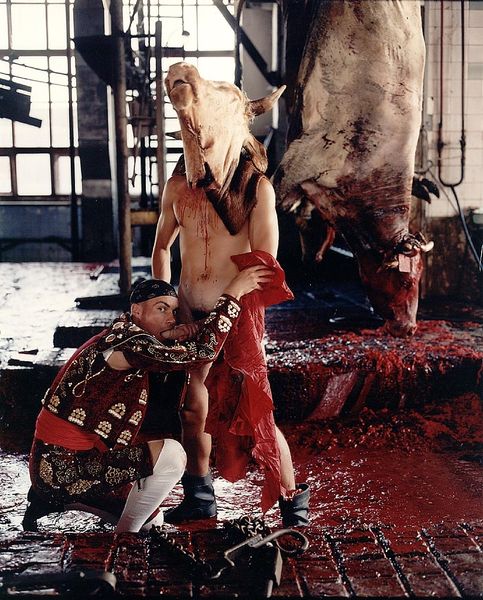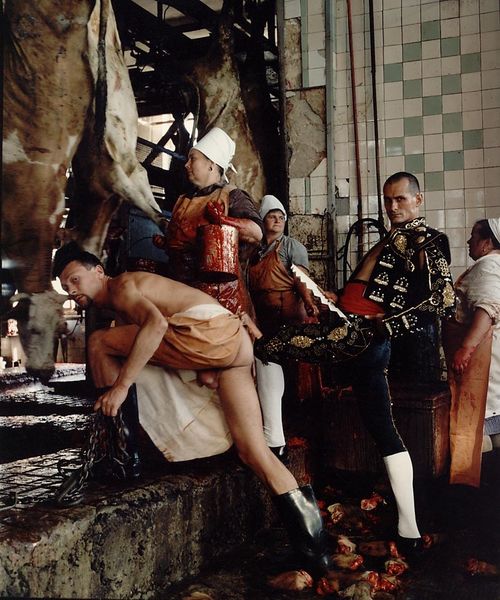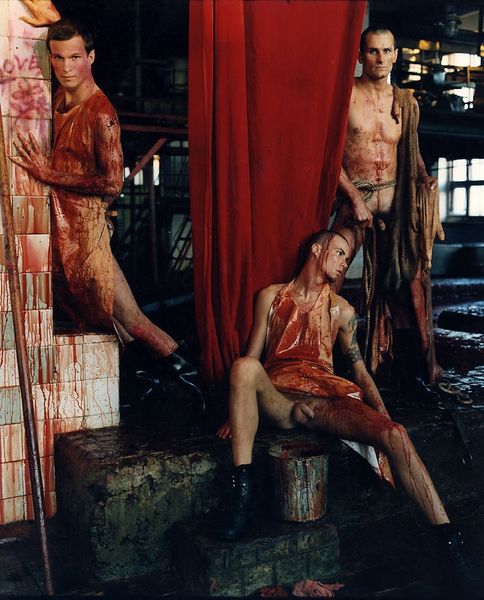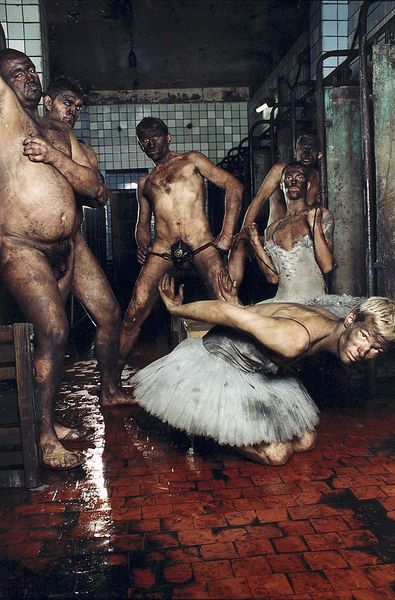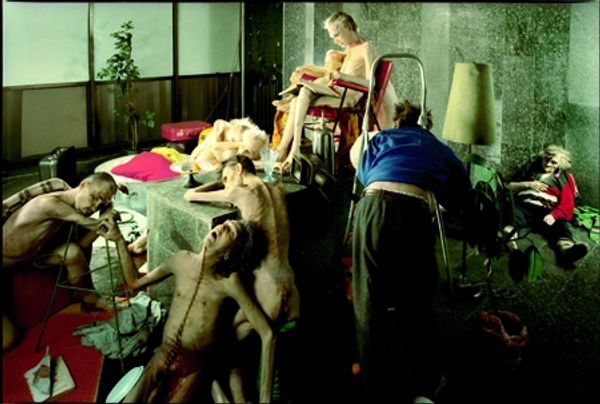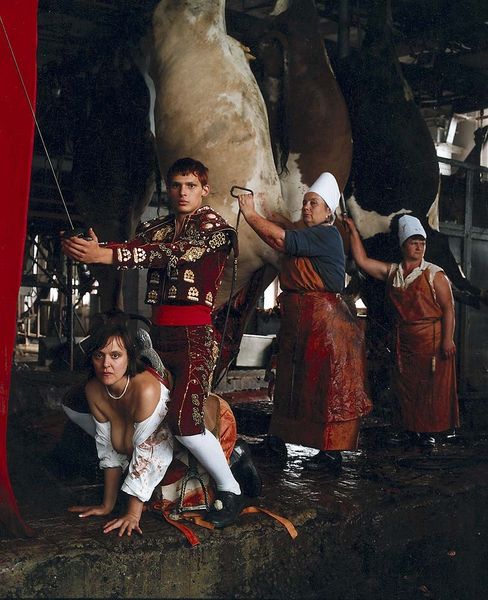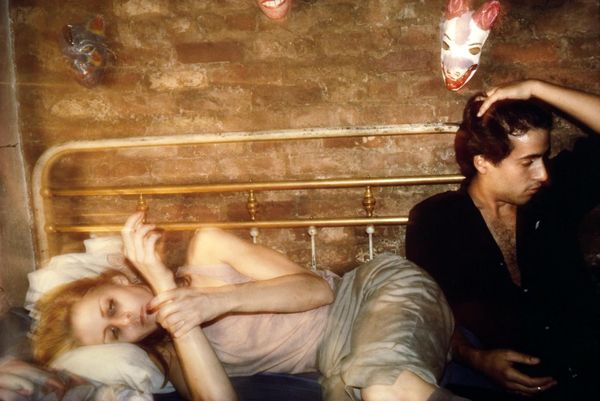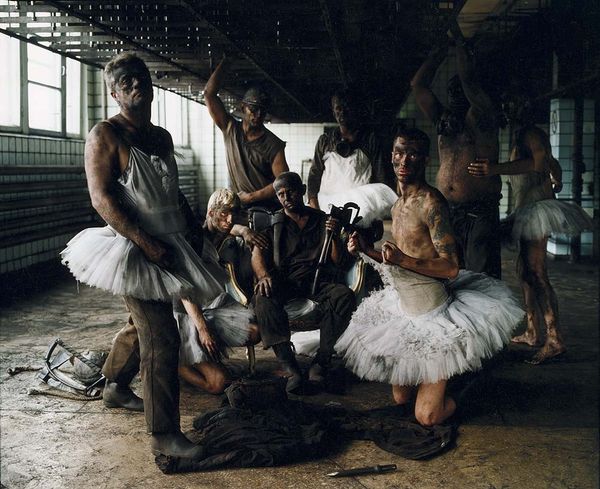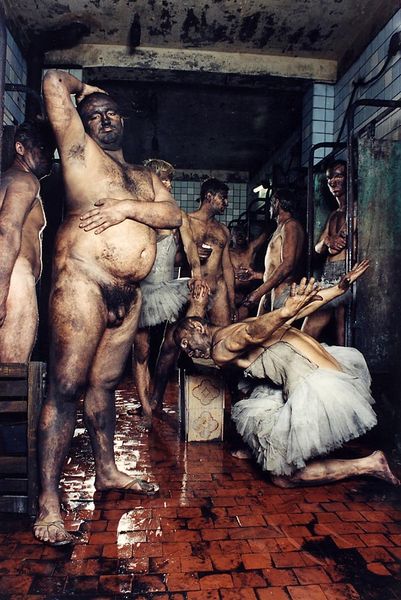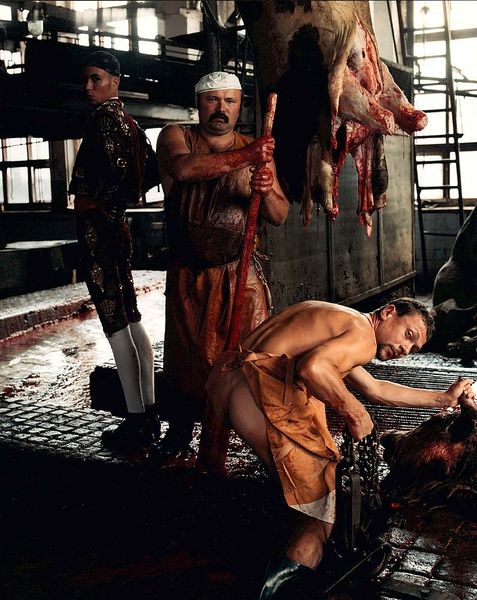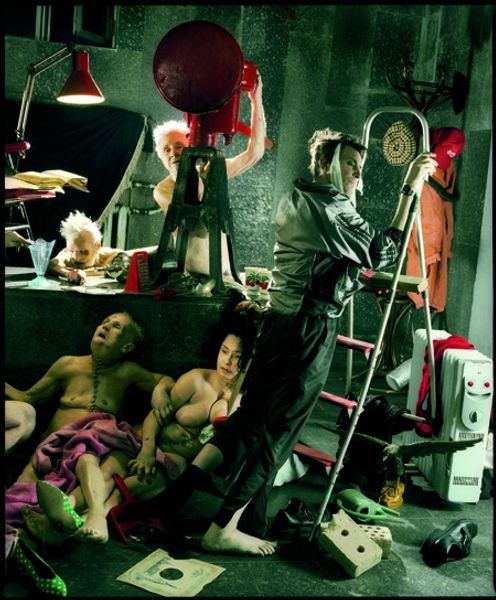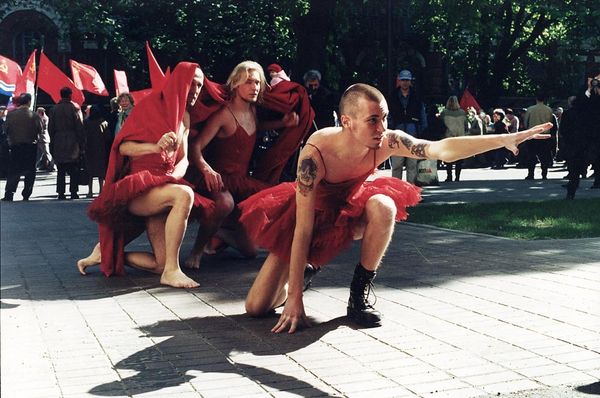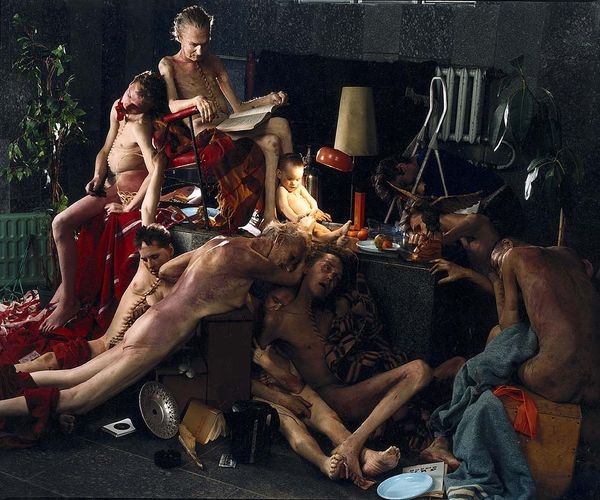
Copyright: Arsen Savadov,Fair Use
Curator: This striking photograph, taken in 1998, is called "Collective Red," a work by the Ukranian artist Arsen Savadov. Editor: It’s... intense. A butcher shop setting, figures adorned in various states of undress and unsettling red smocks. The colors are muted, aside from the pervading red, giving it a kind of horrifying starkness. Curator: Indeed. The unsettling red saturates the scene—it is visually striking and it immediately sets off an almost visceral reaction. Savadov seems to be directly challenging the viewers on the accepted boundaries between aesthetics, violence, and exploitation. He questions the commodification of life. Editor: I immediately pick up on the figures of the matador, juxtaposed with what appear to be butchers, along with those unsettling cow heads that give the scene an almost minotaur-like atmosphere, highlighting a cyclical dynamic of life, sacrifice, and spectacle. The blood evokes ideas of purification, brutality, even a strange kind of perverse communion. Curator: The "Collective Red" series was created after the collapse of the Soviet Union. We see, through Savadov’s work, this chaotic energy and disorientation of Ukrainian society post-communism. What could previously be accepted under the Soviet regime is violently thrust into new light—suddenly there is a disruption of systems of labor, religion, identity...all now bleeding into this very striking "red." Editor: You are absolutely right to emphasize the religious aspects, both hidden and more evident here, the matador evokes ancient Mediterranean iconographies and rituals connected with human power over beast. Savadov creates something akin to a Bosch painting, except with late-20th-century visual idioms. Curator: His approach is undoubtedly challenging. Savadov provokes discussion around the body politic, labor practices, identity post-communism...The list goes on. Savadov’s "Collective Red" becomes almost a time-capsule—challenging what can, will, and must be contested in an era of global socio-political transformation. Editor: And to me, the most powerful aspect may be the way that "Collective Red" forces the viewer to wrestle with their own pre-conceived symbolic frameworks, and really get down to exploring how visual cultures mold collective consciousness and shared experiences. Curator: Well said, his conceptual frameworks allow for such interesting debate! Editor: Agreed. A visually startling experience, open for deep discussion.
Comments
No comments
Be the first to comment and join the conversation on the ultimate creative platform.
